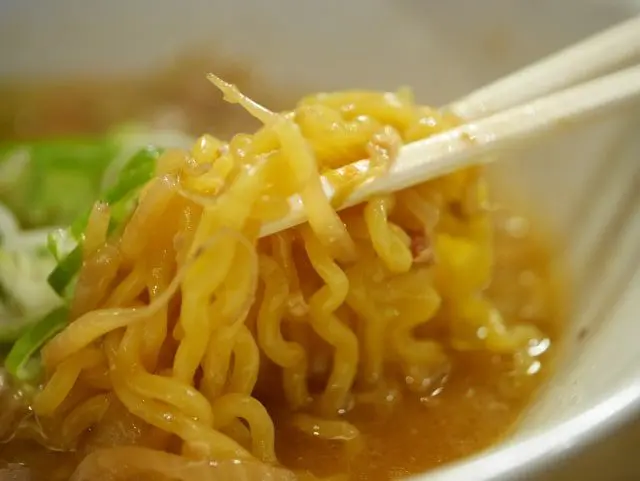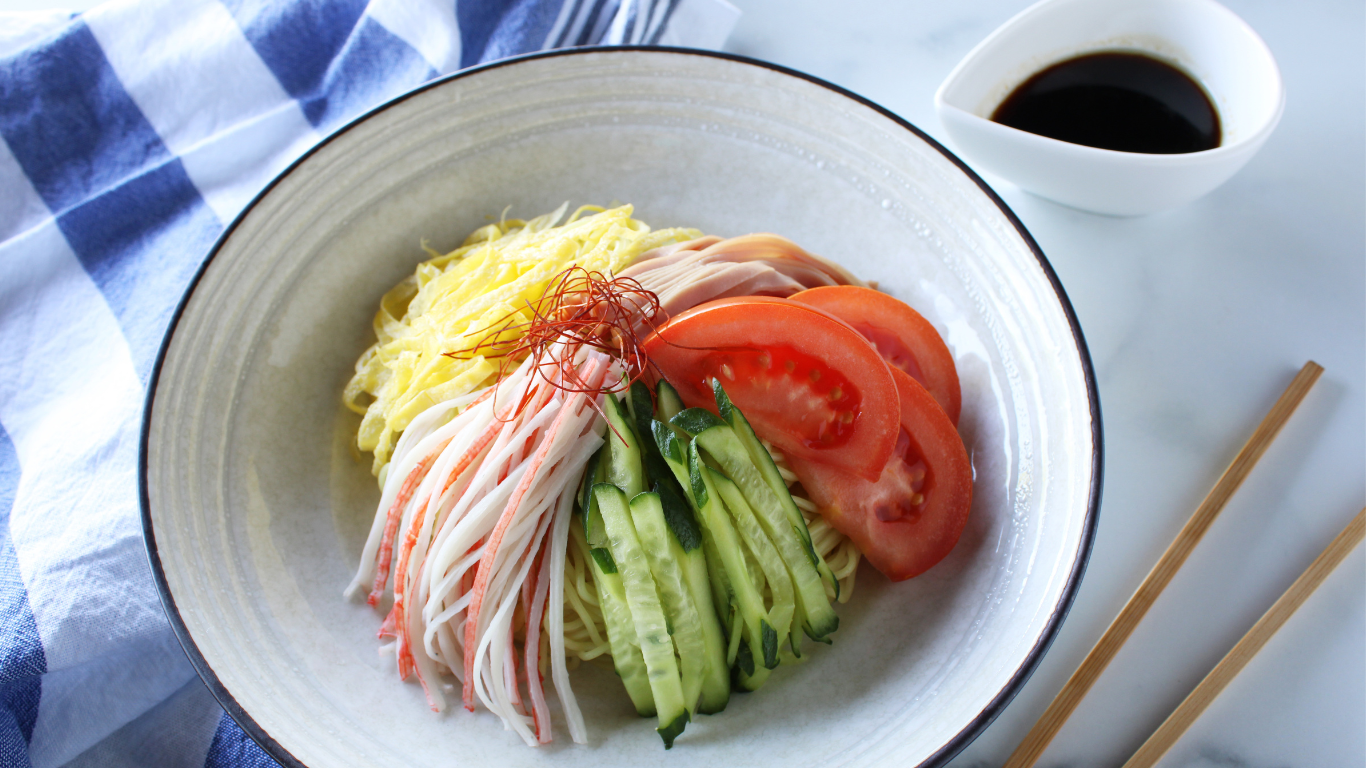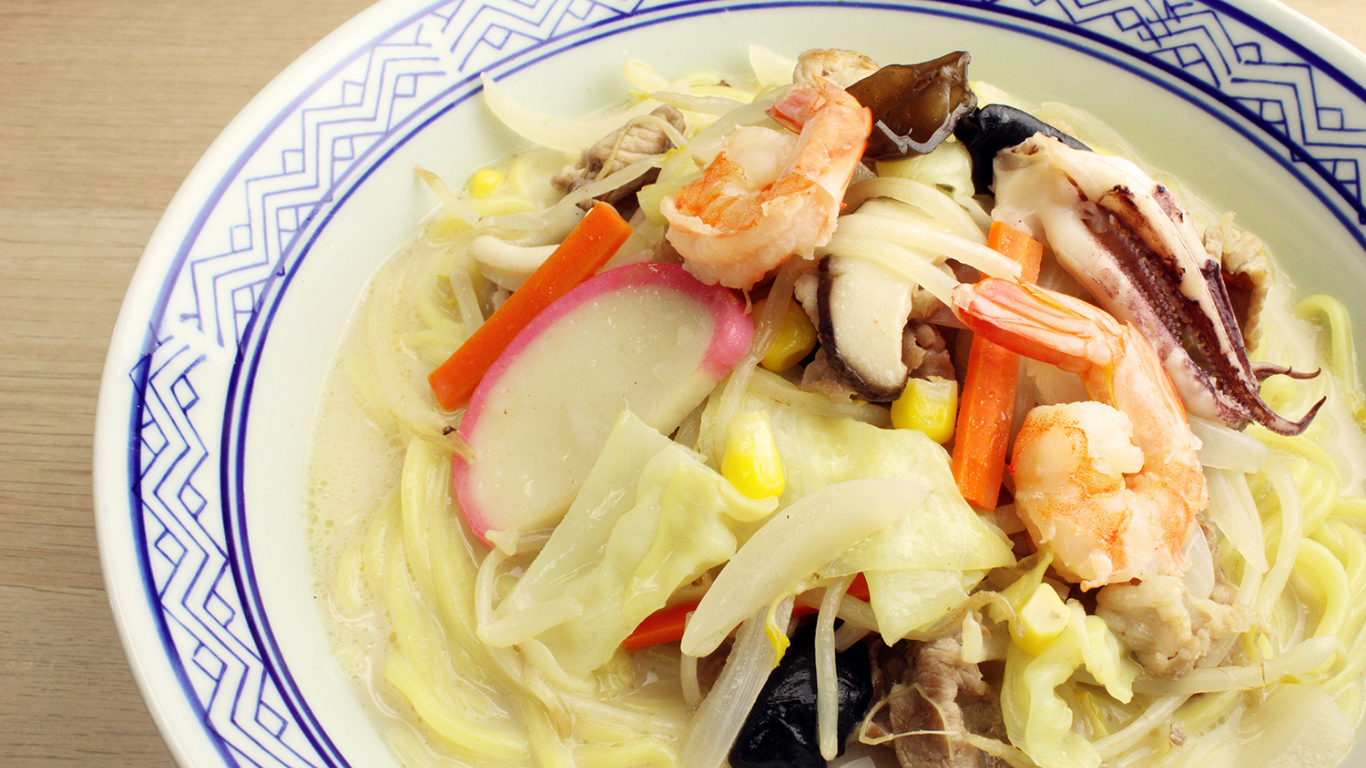What is the difference between Mazemen, Abura soba, and Mazesoba?
Published: Nov 16, 2022/ Last Updated:Mar 28, 2025
- 8 min read
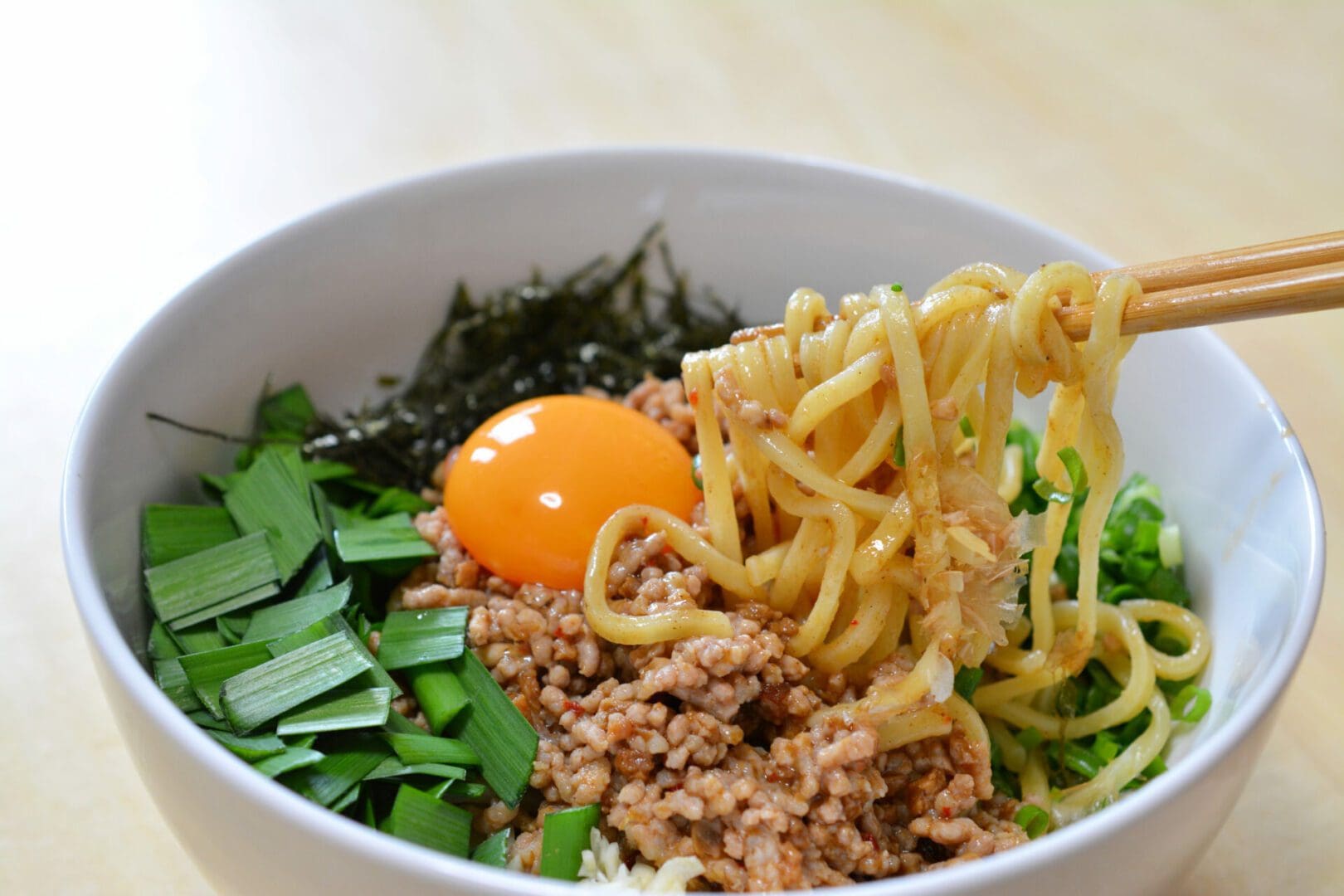
Hello to the ramen fans around the country! Today we would like to talk about Mazemen, a type of ramen that is slowly gaining popularity at ramen restaurants throughout the U.S. This noodle dish may seem like a deviant from conventional ramen as it does not contain soup/broth, but that is what caught the attention of many ramen fans. Its popularity is boosting demand, and some restaurants specialize in such dish. As a fan of ramen, you may already be familiar with Mazemen, but did you know that in Japan, the birthplace of Mazemen, locals know it by a different name? Ramen without soup is often called Abura soba or Mazesoba in Japan. A lover of ramen may already be familiar with both terms, but it raises the question, “What is the difference between Abura soba, Mazesoba, and Mazemen”? Today, we would like to answer these questions with a closer look at the history and evolution of Mazemen. Whether you are already a fan of the dish or you’re eager to give it a try, we’re sure that you’ll enjoy this article. Let’s get started!
- Index
- It all started with Abura soba
- Abura Soba and Mazesoba: two major trends in Japanese-style soupless ramen
- Why is Abura soba and Mazesoba called Mazemen in the U.S.?
- The Difference between Abura soba and Mazesoba
- How to eat mazesoba
- Let’s make Mazesoba at home!
- Conclusion
■It all started with Abura soba
Essentially, ramen is a dish consisting of noodles, soup, and various ingredients (for more information on the components of ramen, please refer to WHAT IS RAMEN? HOW THE HISTORY AND ELEMENTS LEAD TO MODERN-DAY RAMEN). The soup is made by mixing dashi (Japanese soup stock), tare (sauce), and oil or fat. However, what makes Mazemen different is that it completely removes the dashi element from the dish. When you’re used to noodles soaked in delicious soup, Mazemen may be a surprising sight. The dish is often referred to as shiru-nashi ramen (soupless ramen) in some parts of Japan and “dry ramen” in the United States (although this term is somewhat misleading since fresh noodles are mainly used for Mazemen).
When and where did this style of dashi-less ramen originate? There are two popular theories. One is that Sanko (三幸), a restaurant near Hitotsubashi University in Kunitachi City, established in 1952, started serving it as a snack with sake. The other theory is that Chinchintei (珍々亭), a restaurant near Asia University on the border of Musashino City, began selling it in the 1950s. Both restaurants served this soupless ramen under the name, Abura soba (meaning, oily noodles). Whichever theory is true, both lead to the conclusion that Abura soba may be the beginning of what is now known as Mazemen.
■Abura Soba and Mazesoba: two major trends in Japanese-style soupless ramen
Both Sanko and Chinchintei are located in the suburbs of West Tokyo, and both are said to have started serving Abura soba in the 1950s. However, it wasn’t until 1996, some 40 years later, that Abura soba became popular throughout Japan. There are various reasons for this time gap, but one possible catalyst for its breakthrough was the franchising of ramen restaurants that sold Abura soba during this period. In addition, Abura soba’s popularity increased, especially among students, due to its low-cost thanks to omission of the labor-intensive dashi broth, and because of its larger-than-average volume of noodles.
This boom has also inspired many restaurants in Japan to incorporate Abura soba to their menus to meet consumer demands. In response to this trend, restaurants began to differentiate themselves by offering Abura soba under a variety of names, such as Monja soba (probably from monjayaki, a popular Japanese local food similar to okonomiyaki), Tenuki soba (meaning, shoddy ramen or effortless ramen), Aburamen, and Shiru-nashi ramen. In fact, the name Mazesoba (meaning, mixed noodles) is another name variation, suggesting that Mazesoba has the same roots as Abura soba.
In 2008, however, the name Mazesoba took a leap forward from being synonymous with Abura soba to being a word to describe a specific regional ramen known as Taiwan mazesoba. This ramen dish originated in Nagoya City, Aichi Prefecture, and you can learn more about it in our previous article, HOW MANY DO YOU KNOW? THE PROFOUND WORLD OF REGIONAL RAMEN. Taiwan mazesoba differs from conventional Abura soba in the ingredients. With the dish gaining popularity, a clear line has been drawn between the term “Abura soba” and the term “Mazesoba,” though both share the broad framework of “ramen without the broth.”
■Why is Abura soba and Mazesoba called Mazemen in the U.S.?
Abura soba and Mazesoba are considered the original soupless ramen in Japan, but in the United States, both dishes are often referred simply as Mazemen. For example, we looked at Google Trends for all three names in the U.S. over the past 12 months and found that Mazemen was used more commonly than the others as of October 24, 2022. It’s interesting that in the U.S., “Mazemen” is commonly used to describe the dish, whereas in Japan, the birthplace of soupless ramen, the terms are different. We have considered several reasons for this. The first is that most Americans may misunderstand the word soba in both “Abura soba” and “Mazesoba” to Japanese soba noodles. In the U.S., soba falls into its own noodle category, separate from the type of noodles commonly used in ramen. In Japan, ramen was originally called Chuka soba (meaning, Chinese noodles), and it is common for the word “soba” in names of dishes that use Chinese noodles (yakisoba and Okinawa soba are good examples). In contrast, since most Americans view soba strictly as Japanese soba noodles, it may be easier for them to understand Chinese noodle dishes to use the word men (meaning, noodle). Another reason is that the word “Mazemen” in the United States may be understood as “ramen-inspired soupless noodles” in the broad sense of the word, which is “Abura soba” and “Mazesoba” from Japan. As evidence, a google search for “Mazemen” reveals various styles of the dish that are not limited to the Japanese style of Abura soba or Mazesoba. In any case, these findings suggest that Mazemen is an ongoing movement that has not yet been fully defined. Unfortunately, this research did not reveal who invented the name “Mazemen” or when it came about.
■The Difference between Abura soba and Mazesoba
We mentioned in the previous section that Mazesoba started out as another name for Abura soba, before it came to mean the specific dish, Taiwan mazesoba. Now, let’s look at the key difference between Abura soba and Mazesoba (Taiwan mazesoba).
・Abura soba
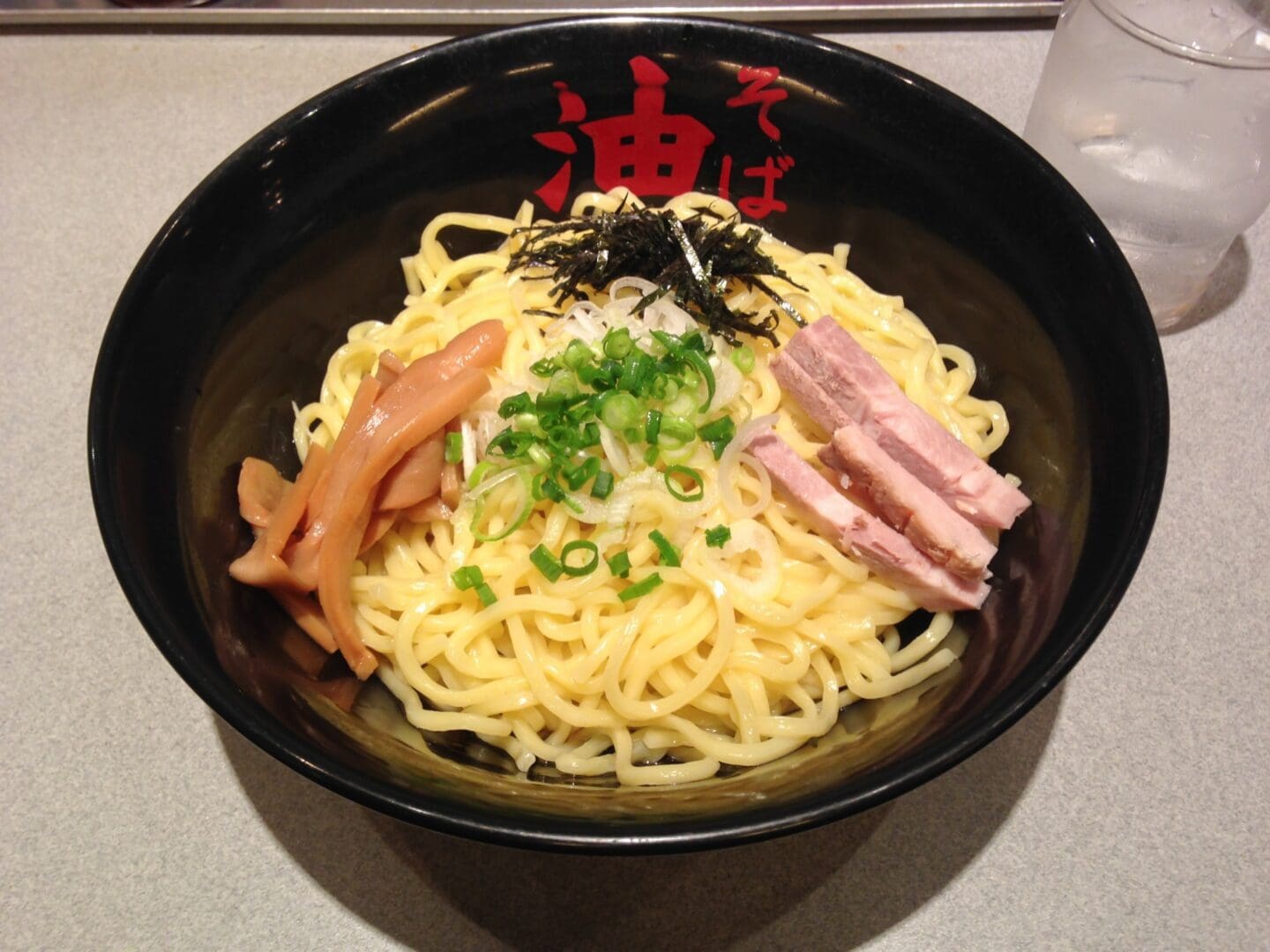
First, let’s explain what the preceding creation, Abura soba, is all about. Abura soba is a dish in which soy sauce-based tare is poured into the bottom of a bowl and served with boiled noodles and toppings. This layering requires that you thoroughly mix the noodles and tare before eating to properly season the dish. When mixing the noodles, you can also add the separately prepared rayu (chili oil) and vinegar to your liking and toss the noodles as you eat them. Toppings are mostly simple, such as onsen tamago (slowly cooked soft-boiled egg), chopped nori, menma (pickled bamboo shoots), chashu (braised pork), and green onions. Most used oil is vegetable oil.
・Mazesoba (Taiwan mazesoba)
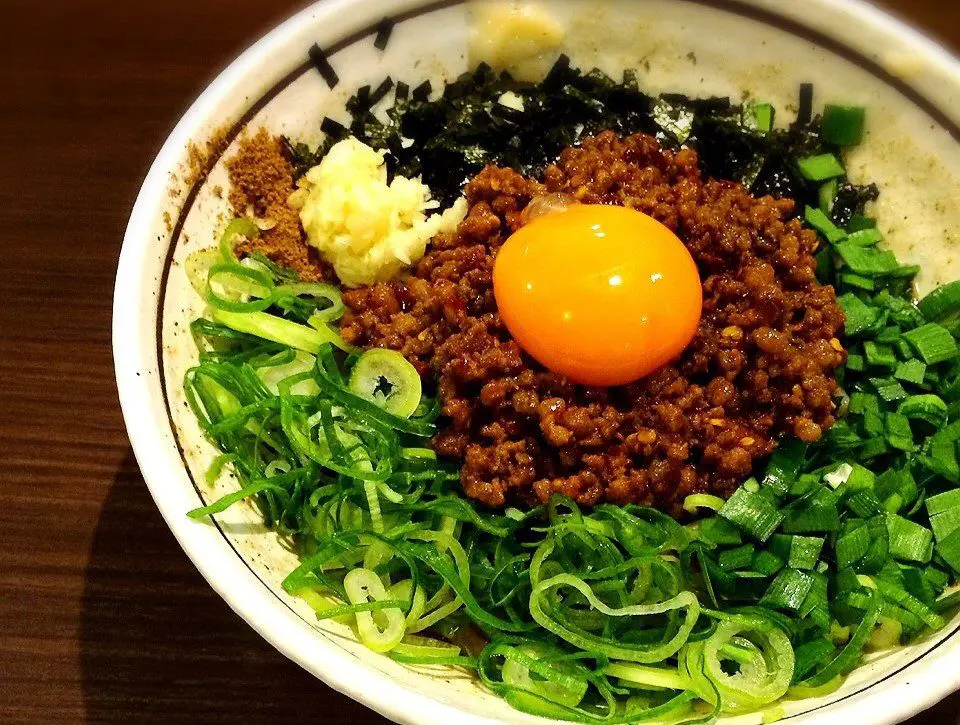
In contrast, Mazesoba (Taiwan mazesoba) is served with the sauce mixed into the noodles from the start. The ingredients are more robust than those of Abura soba, and include chili pepper, garlic, Taiwanese minced meat (spicy soy sauce flavored minced meat with chili peppers and garlic), chives, green onions, and egg yolks. These ingredients must be mixed well before eating, which is why the noodles and sauce are pre-tossed. Furthermore, Mazesoba can be enjoyed by adding rice (oi-meshi [追い飯]) to the remaining ingredients after the noodles are finished. As for the oil, animal oil such as lard or back fat is often used.
However, there are some similarities between Abura soba and Mazesoba. Both types of ramen often use thicker noodles than those of typical ramen, which start to stick together when they turn cold. For this reason, both dishes require you to stir when the dish is still hot.
There are currently several restaurants in the U.S. that offer Abura soba or Mazesoba, and some of the most well-known are listed below. If you are interested in tasting the difference between Abura soba and Mazesoba firsthand, we encourage you to visit one of them.
A restaurant that serves Abura soba
KAJIKEN US
7 E 33rd St, Baltimore, MD 21218
Instagram: @kajikenusa
A restaurant that serves Taiwan mazesoba
Menya Hanabi
733 W Naomi Ave Suite K, Arcadia, CA 91007
Instagram: @menyahanabiusa
Even though they may appear to be similar soupless ramen, Abura soba and Mazesoba have different characteristics. The next time you have a chance to try a bowl of Mazemen at a restaurant, it would be interesting to find out whether it reflects the characteristics of Abura soba or Mazesoba more strongly.
■How to eat mazesoba
In recent years, mazemen has been gaining popularity, with more ramen shops adding it to their menus. However, since it is served and eaten differently from regular ramen, some people may feel hesitant to give it a try.
For those who are unsure, we have created an illustrated guide on how to enjoy mazemen. One of its key features is that it encourages you to freely customize the flavor using various seasonings, even more so than regular ramen.
Next time you see mazemen on a restaurant menu, we highly recommend giving it a try! And to fully enjoy it—right down to the final “rice add-on”—make sure to come with a good appetite before diving in.
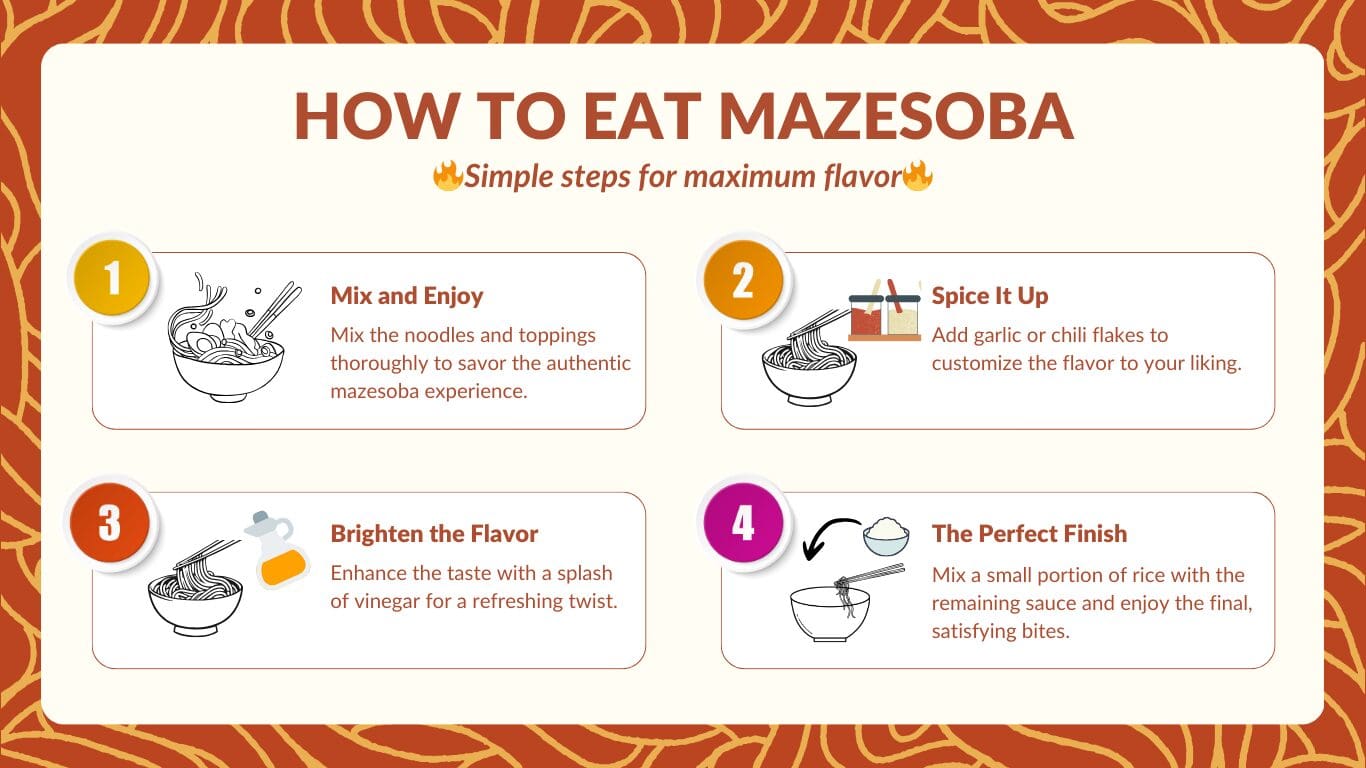
■Let’s make Mazesoba at home!
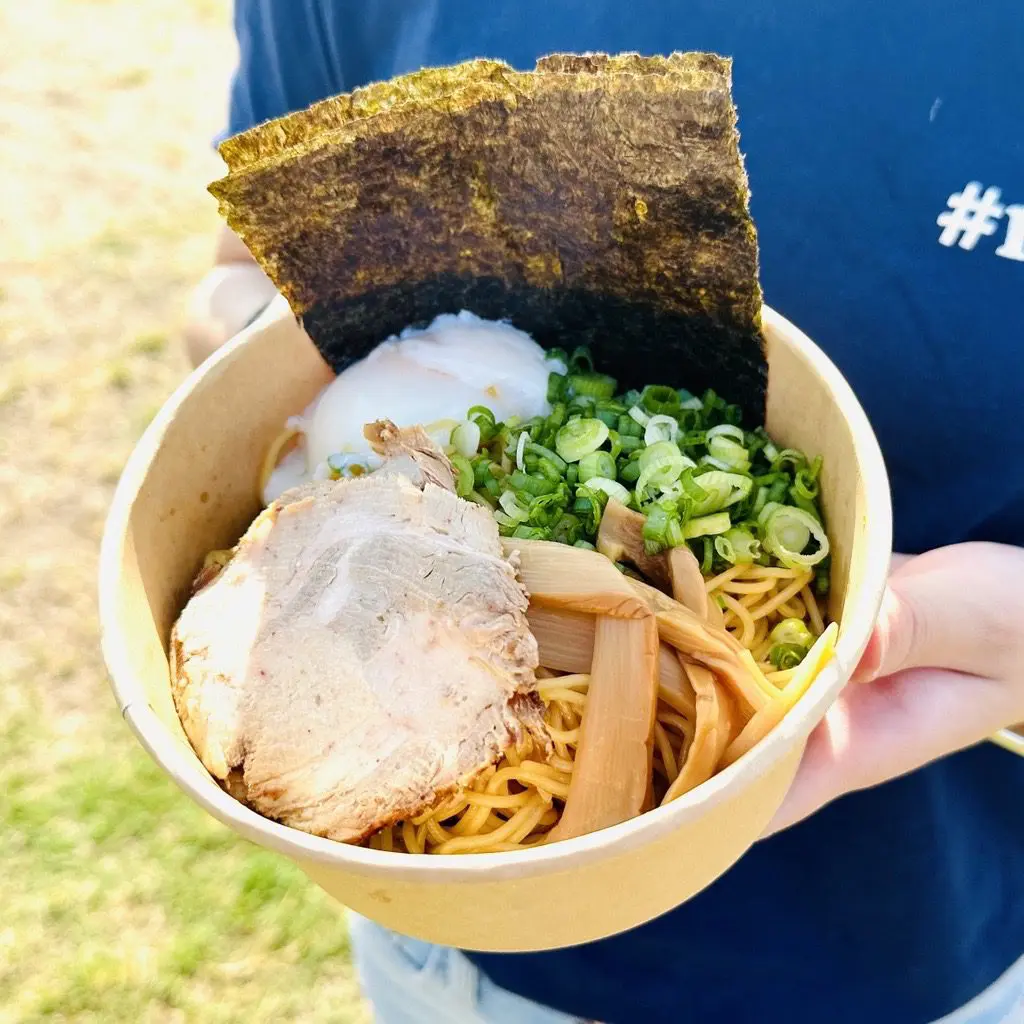
Mazemen is rapidly gaining attention among ramen fans in the U.S., but still only a few restaurants are offering the dish. For those who are interested in Mazemen but cannot find a ramen restaurant nearby that serves it, we have prepared a simple recipe to make at home, using Myojo USA’s ORIGINAL HIYASHI CHUKA. Preparing the sous vide egg in this recipe may be a bit of a challenge, but we encourage you to try it to enjoy the creamy flavor of the dish. We will also share this article that introduces tips on how to make sous vide egg well, and we hope you will find it useful as well. Once you get the hang of making Mazemen, try experimenting with different toppings and seasonings to find your favorite Mazemen.
Recipe: Mazesoba with Hiyashi Chuka Kit
■Conclusion
In this issue, we delved into the Mazemen that’s recently attracted attention among ramen lovers. However, this article is only about the roots of the current Mazemen, Abura soba and Mazesoba styles that originated in Japan. In fact, during our research, we discovered that the concept of Mazemen has already expanded beyond the Japanese style of Abura soba and Mazesoba. The Miso Butter Mazemen, Bacon and Egg Mazemen, and Three Cheese Mazemen recipes here are examples of how Mazemen has inspired culinary innovation that extends beyond the traditional Japanese-born Abura soba and Mazesoba. Perhaps this is the result of Mazemen’s elimination of dashi, a particularly labor-intensive element of ramen recipes, which has allowed it to be even freer than ramen and has spurred creativeness among food lovers. Perhaps Mazemen’s recipe variations will increase exponentially in the future and will soon overtake ramen recipe variations (is this a bit of an exaggeration?). In any case, we at Myojo USA are not to be outdone. We will continue to devote our efforts to creating a variety of appealing Mazemen recipes. If you have any suggestions for Mazemen that you would like to try, please contact us and we will be happy to help you come up with a recipe.
That concludes this article. Stay tuned for the next article, which will also have some interesting topics for ramen lovers!
Reference links:
3分でわかる油そばとまぜそばの違い!実は両者は同じ食べ物!?汁なしそばとの違いも合わせて雑学大好き現役大学生が解説 – Study-Z ドラゴン桜と学ぶWebマガジン
まぜそばとは?油そばとはどう違うの?その魅力をラーメンマニアが解説 – フードマニア Food Mania by 旭屋出版
「油そば」と「まぜそば」の違いとは?分かりやすく解釈
油そば – Wikipedia
台湾まぜそば – Wikipedia
油そばの元祖とされる大衆酒場 国立『三幸』 – 日が沈む前に飲む酒はウマい
【武蔵境】1957年から愛される元祖の味。油そば発祥の老舗『珍珍亭』 | favy[ファビー]
「油そば」と「まぜそば」ってどう違う?いまさら聞けないふたつの違い | 東京、神奈川で油そばの専門店をお探しなら | ぶらぶら
油そばの歴史とは?油そば発祥ルーツとブレイクした理由を徹底解説! | 東京、神奈川で油そばの専門店をお探しなら | ぶらぶら
「台湾まぜそば」が数年で急ブレークした理由 | 井手隊長のラーメン見聞録 | 東洋経済オンライン | 社会をよくする経済ニュース
What is Mazesoba? – IIKO Mazesoba – Brothless Specialty Ramen in Sydney
Mazesoba (Mazemen) 台湾まぜそば • Just One Cookbook
Mazemen: The Broth-Less Ramen Dish You Should Know
Abura Soba (Soupless Ramen Noodles)
Abura soba, the ramen that shed its broth
Abura Soba: The Next Great Wave in Japanese Ramen?
